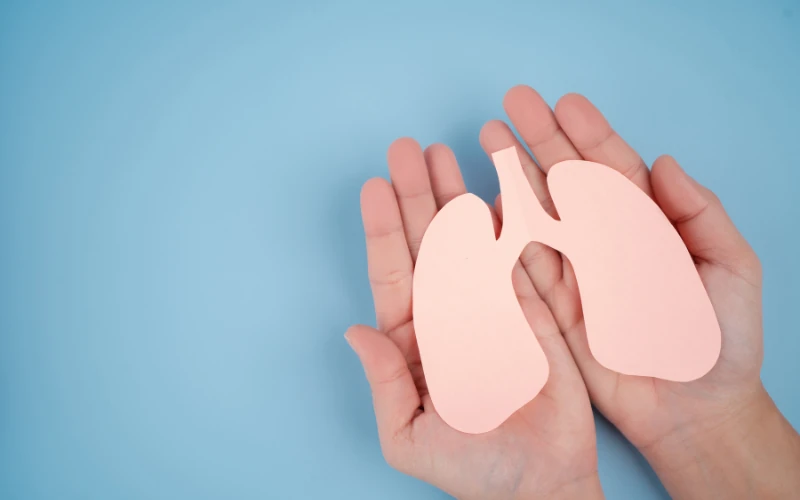Pulmonary hypertension (PH) is a medical condition characterized by high blood pressure in the arteries that supply the lungs (pulmonary arteries). This increased pressure can strain the heart’s right ventricle, leading to symptoms such as shortness of breath, fatigue, chest pain, and fainting. PH can be caused by various underlying conditions, including lung diseases, heart conditions, blood clots in the lungs, and certain genetic factors.
In 2024, the landscape of pulmonary hypertension (PH) care is rapidly evolving with the introduction of innovative treatments and technologies. By leveraging Remote Patient Monitoring (RPM), healthcare providers can remotely monitor vital signs and symptoms, enabling proactive interventions and personalized care delivery for patients living with PH.
What is Pulmonary Hypertension?
Pulmonary hypertension (PH) is a complex and potentially life-threatening condition characterized by high blood pressure in the arteries of the lungs. This increased pressure can strain the heart and eventually lead to heart failure if left untreated. PH can be idiopathic (of unknown cause) or secondary to other underlying conditions such as congenital heart disease, pulmonary embolism, or connective tissue disorders.
PH is classified into five groups based on the underlying cause and pathophysiology, ranging from Group 1 (pulmonary arterial hypertension) to Group 5 (PH with unclear or multifactorial mechanisms). Each group presents unique challenges in diagnosis and management, requiring a tailored approach to treatment.
Traditional Treatment Options
Current Standard Therapies
Despite significant advancements in recent years, the cornerstone of treatment for pulmonary hypertension (PH) remains centered around a few key therapeutic strategies. These include:
- Calcium Channel Blockers: In patients with pulmonary arterial hypertension (PAH) who respond positively to acute vasodilator testing, calcium channel blockers may be prescribed to help relax and dilate the blood vessels in the lungs, reducing pulmonary artery pressure.
- Endothelin Receptor Antagonists (ERAs): Medications such as bosentan, ambrisentan, and macitentan target the endothelin pathway, which plays a key role in regulating vascular tone and proliferation. By blocking endothelin receptors, ERAs help to alleviate vasoconstriction and vascular remodeling in the pulmonary arteries.
- Phosphodiesterase-5 (PDE-5) Inhibitors: Drugs like sildenafil and tadalafil inhibit the breakdown of cyclic guanosine monophosphate (cGMP), a signaling molecule that promotes vasodilation. By enhancing the effects of cGMP, PDE-5 inhibitors help to relax smooth muscle cells in the pulmonary arteries, reducing pulmonary vascular resistance.
- Prostacyclin Analogs: Prostacyclin is a potent vasodilator and inhibitor of platelet aggregation, with protective effects on the pulmonary vasculature. Synthetic prostacyclin analogs such as epoprostenol, treprostinil, and iloprost are administered via various routes (e.g., intravenous, subcutaneous, inhaled) to improve symptoms and exercise capacity in PAH patients.
- Soluble Guanylate Cyclase (sGC) Stimulators: Riociguat is the first-in-class sGC stimulator approved for the treatment of PAH and chronic thromboembolic pulmonary hypertension (CTEPH). By sensitizing sGC to endogenous nitric oxide, riociguat promotes vasodilation and inhibits vascular remodeling.
Limitations and Challenges
While these traditional treatment options have significantly improved outcomes for patients with PH, they are not without limitations. Many patients may experience only modest improvements in symptoms and exercise capacity, and some may fail to respond adequately or experience intolerable side effects.
Furthermore, the complex pathophysiology of PH often necessitates combination therapy with multiple medications targeting different molecular pathways. This approach can increase the complexity of treatment regimens and the risk of drug interactions, requiring close monitoring and management by healthcare providers.
In the next section, we will explore emerging therapies in 2024 that offer new hope for patients with pulmonary hypertension, focusing on recent advancements and promising developments in the field.

Emerging Therapies in 2024
In recent years, significant strides have been made in the development of novel therapies for pulmonary hypertension (PH), offering new hope for patients and healthcare providers alike. These emerging treatment options encompass a diverse range of approaches, targeting various pathogenic mechanisms implicated in PH pathophysiology:
Overview of New Treatment Options
- Novel Vasodilators: Researchers have identified new molecular targets involved in regulating vascular tone and pulmonary arterial remodeling, paving the way for the development of next-generation vasodilators with enhanced efficacy and safety profiles.
- Disease-Modifying Therapies: Beyond symptom management, there is growing interest in developing therapies that can modify the underlying course of PH by targeting key disease drivers such as inflammation, fibrosis, and endothelial dysfunction.
- Precision Medicine Approaches: Advances in molecular biology and genetics have enabled a deeper understanding of the heterogeneity of PH phenotypes and underlying genetic susceptibilities.
Mechanisms of Action and Potential Benefits
- Enhanced Target Specificity: Emerging therapies often exhibit greater selectivity for their molecular targets, minimizing off-target effects and improving tolerability compared to traditional treatments. By precisely modulating key pathways implicated in PH pathophysiology, these therapies may offer more effective disease control with fewer adverse reactions.
- Improved Pharmacokinetics: Many novel agents boast optimized pharmacokinetic properties, such as prolonged half-lives, improved bioavailability, and alternative routes of administration. These enhancements can enhance treatment convenience and adherence, particularly for patients who require long-term or combination therapy.
- Disease-Modifying Potential: Some emerging therapies hold promise as disease-modifying agents that can not only alleviate symptoms but also alter the natural history of PH. By targeting underlying pathogenic mechanisms, these therapies may slow or even reverse disease progression, offering new hope for patients with advanced or refractory PH.

Considerations for Healthcare Providers
Incorporating New Treatments into Practice
As new therapies for pulmonary hypertension (PH) continue to emerge, healthcare providers play a crucial role in evaluating their safety, efficacy, and potential benefits for patients. Incorporating these novel treatments into clinical practice requires careful consideration of several factors, including patient characteristics, disease severity, treatment goals, and available resources.
Healthcare providers should stay informed about the latest advancements in PH care through ongoing education, participation in medical conferences, and engagement with clinical research. This knowledge enables providers to stay abreast of evolving treatment guidelines and evidence-based practices, facilitating informed decision-making in patient care.
When considering the adoption of new therapies, healthcare providers must assess their compatibility with existing treatment regimens, potential drug interactions, and the need for dose adjustments or monitoring protocols. Collaborative multidisciplinary approaches involving specialists such as cardiologists, pulmonologists, rheumatologists, and pharmacists can enhance the quality and safety of PH care.
Patient Education and Counseling
Effective patient education and counseling are essential components of PH management, particularly when introducing new treatments. Healthcare providers should strive to empower patients with knowledge about their condition, treatment options, and self-care strategies, fostering active participation in their care journey.
Patient education should encompass a variety of topics, including the nature of PH, the importance of treatment adherence, common side effects and their management, lifestyle modifications, and strategies for coping with the emotional and psychological challenges of living with a chronic illness. Clear communication, tailored to the individual needs and preferences of each patient, enhances understanding and promotes shared decision-making.
Counseling sessions offer opportunities for patients to express their concerns, ask questions, and voice their treatment preferences. Providers should create a supportive and non-judgmental environment that encourages open dialogue and fosters trust between patients and their healthcare team. Addressing patient fears, misconceptions, and barriers to adherence is essential for optimizing treatment outcomes and promoting patient engagement and satisfaction.

Future Direction
Potential Impact of New Treatments on PH Management
The landscape of pulmonary hypertension (PH) management is poised for transformation with the advent of novel therapies and emerging treatment modalities. As researchers continue to unravel the complexities of PH pathophysiology and develop innovative therapeutic strategies, the potential impact on patient outcomes and quality of life is profound.
New treatments offer the promise of more effective disease control, improved symptom management, and enhanced long-term survival for patients with PH. By targeting key pathogenic mechanisms with greater precision and selectivity, these therapies may address unmet clinical needs and provide new avenues for personalized medicine approaches.
Furthermore, the development of disease-modifying agents holds the potential to alter the natural history of PH, slowing or even halting disease progression and preserving cardiopulmonary function over time.
Breaking Down Pulmonary Hypertension through DrKumo’s RPM
As we explore the latest advancements in treating pulmonary hypertension (PH) in 2024, it’s crucial to consider the role of innovative technologies like DrKumo’s RPM. DrKumo’s RPM solution offers a transformative approach to managing PH by enabling healthcare providers to remotely monitor patients’ vital signs and symptoms.
By leveraging RPM, healthcare teams can proactively intervene and personalize treatment plans based on real-time data, ultimately improving patient outcomes and quality of life. With DrKumo‘s commitment to revolutionizing healthcare delivery through cutting-edge technology, the integration of RPM into the landscape of PH care represents a promising step forward in enhancing patient-centered approaches and optimizing treatment strategies.
In this comprehensive exploration of new treatments for pulmonary hypertension (PH), we have delved into the latest advancements in medical science, patient perspectives, and the evolving landscape of PH care. From the foundational understanding of PH pathophysiology to the promise of innovative therapies, our journey has underscored the complexities and opportunities inherent in managing this challenging condition.
With each breakthrough in medical science and each personal triumph over adversity, we edge closer to our shared goal of improving the lives of individuals affected by PH. Embracing innovative solutions like RPM empowers healthcare providers and patients alike, enhancing access to timely care, optimizing treatment adherence, and improving clinical outcomes.
To learn more about how DrKumo’s RPM solutioncan enhance pulmonary hypertension care and improve patient outcomes,contact us today. Take the first step towards revolutionizing PH management with DrKumo‘s cutting-edge technology and personalized care solutions.
Disclaimer: The information provided is for educational and informational purposes only. It is not intended to be a substitute for professional medical advice, diagnosis, or treatment.








